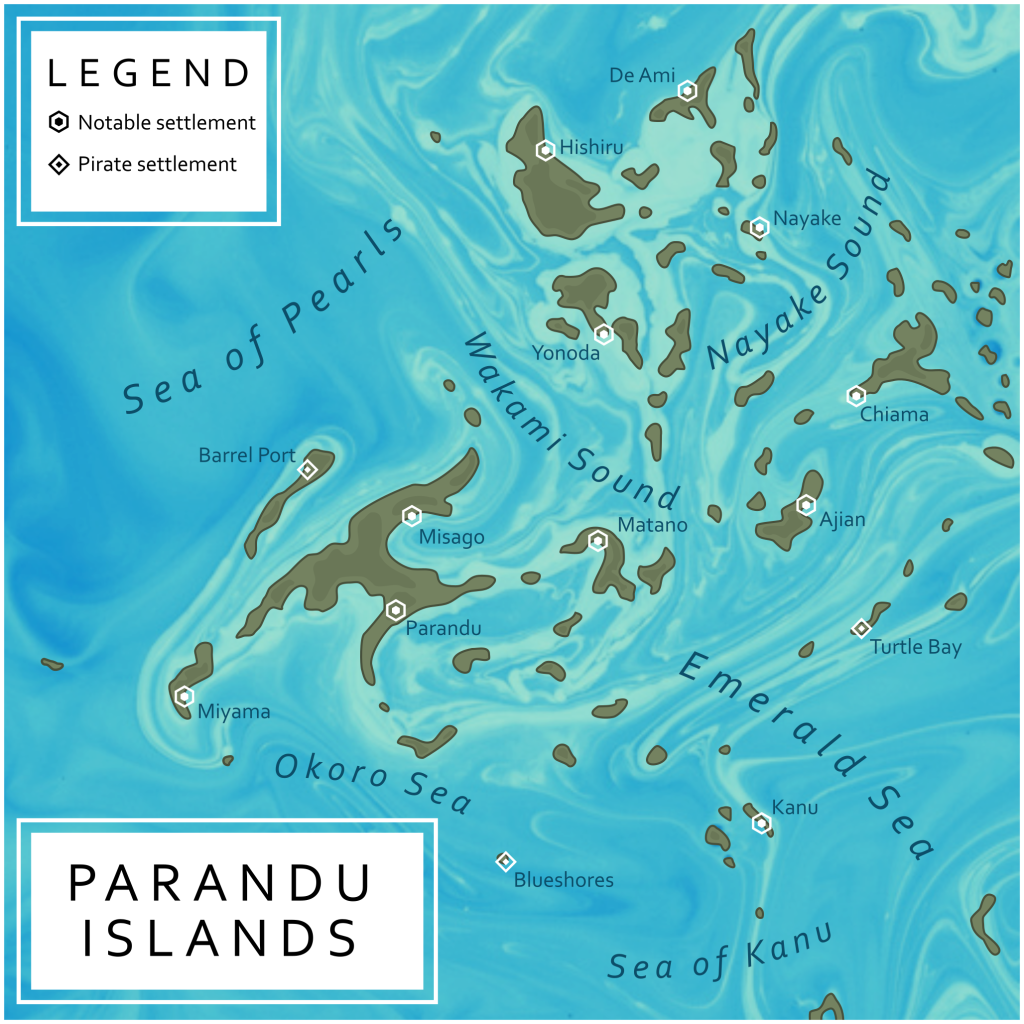The secret cosmology of the universe was revealed by Mani the Prophet in the sacred books written by his own hand. Earth is caught between the eternal war between the forces of Light and Dark, a liminal space between the Realms of Light and Dark serving as a prison for humanity whose souls must break from their earthly bonds and return to the World of Light. Now, as the Great Yamgate has the scientific ability to leave the confines of earth, the ancient cosmology was consulted to guide the perfects and hearers in their great journey.
I felt like making an in-universe map, as I haven’t done one for about two years. One idea that has always been in the back of my mind for ages is a medieval or manuscript-like map of the universe and space, and this concept partly prompted my Feudalverse worldbuilding project. I had recently finished the HBO series ‘Raised by Wolves’, and the show’s use of Mithraism as a futuristic space-faring church was pretty inspiring, and I wondered how I could do something similar to that. About a month ago I had done quite a bit of research on Manichaeism, and the cosmology of that religion is pretty crazy and fascinating, and I decided a Manichaean view of the universe could be interesting to depict.
I knew that this would not be an entirely accurate portrayal of Manichaean cosmology, as not only was it incredibly complicated but next to impossible to depict without lots and lots of overlapping features, entities and realms. Instead, I decided to boil it down to a very stylistic representation of our solar system with Manichaean ideas that may have been a much later creation in-universe that tried to reconcile Mani’s cosmology with the reality of space. I’ll run down my process and the map’s features
Firstly, the text. I used a font version of Ardashir, a script used to write Middle Persian back during Mani’s time. Not only is this script very beautiful to see, but it also conveys a sense of authenticity to the map. Where I could, I used Middle Persian words I got from a dictionary, but in some places I regrettably wrote in English with the font. For example, the text around the border of the map is a selection from the Manichaean ‘Hymn on the End of the World‘:
We would invoke the gods that they may save us
from this evil age of tyranny, full of strife and unbelief.
Lines 3-4
I thought that this excerpt was appropriate for a map made to guide people away from the Earth, a place that Manichaeans viewed quite negatively. The website where I found the hymn archived had it translated into English from Parthian, and it doesn’t display the original text. Because of this I decided to simply write it in English using Ardashir. Alongside these lines I also included eleven important named spheres. In the bottom right-hand corner is Earth. While I intended to use the Middle Persian ‘Zamig’ for this label, in my opinion the word written in Ardashir didn’t look as pretty as ‘Earth’ did, so I retained English for this instance too. For the remaining ten spheres, however, I took a lot of time making sure, to the best of my ability, that I used the correct Middle Persian words.
In the bottom left-hand corner are five spheres representing the ‘Five Shekhinas’: Reason (Cim), Intelligence (Frazanagih), Thought (Humat), Mind (Axw) and Understanding (Uzwarisn). In this map I decided that these five main aspects of the World of Light should be almost viewed as planets in our solar system. Additionally, Manichaean scripture says that there were five evil counterparts to all of these aspects, so I looked up antonyms in the Middle Persian dictionary and represented them in the top right: Without Reason (Abecim), Stupidity (Dusagah), Evil Thought (Dushumat), Body (Kalbod) and Ignorance (Adanih). The reason I decided to contrast ‘Mind’ with ‘Body’ is the belief that physical things are not good. These five elements of Darkness would also be viewed as five planets in the solar system. There are of course eight planets in the solar system, but I thought that the Sun and the Moon would also be included in this ‘rationalisation’ of the cosmology, with the Sun as a world of Light and the Moon as a world of Dark.
I denoted these Light and Dark halves of the cosmos with lines on the Dark half and leaving the Light half empty. The extra circle around Earth also has a Dark half and a Light half that I chose to use to represent how Earth was found in an area where Darkness and Light were mixed. I think the symbology also evokes the Taoist Yin and Yang image, which actually is appropriate for Manichaeism as though originating in the Sassanian Empire, it was a very expansive and inclusive religion taking in aspects from Zoroastrianism, Christianity and Buddhism.
Lastly, there is a pathway that cuts through the Light and Dark halves of the cosmos which is the ‘Column of Glory’. This was said to be the path souls took from Earth to return to the World of Light. Even though in my map it bisects the two realms, I wanted it to represent how human souls have to escape the confines of the divine war between Light and Dark through a journey rationalised after an increased understanding of the solar system, mainly a stylistic depiction of space travel and leaving the Earth’s atmosphere. This setting of an ‘advanced’ Manichaeism would entail Manichaeans seeking to leave Earth in ships, like a space exodus, taking the Manichaean scripture and applying it to real-world physics in a way I think is quite interesting to think about.
I hope to be able to make more stylistic and cosmological maps like this in the future, as it really was a lot of fun to make. Now all I need to do is think of a new subject and style.



